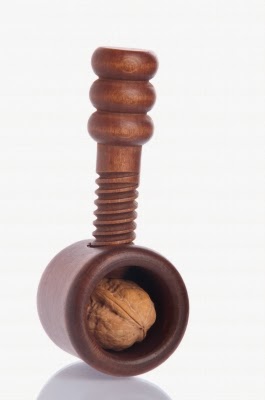Making "Nutcracker Man" Dance
Give evolutionists some scraps of bone and rock, call an artist and stand back. Using their preconceptions, imaginations, speculations, guesses, commitment to naturalism and a boatload of logical fallacies, and you get something to put in a museum to promote an evolutionary worldview. As a bonus, it's promoted as science. (Know the difference between fantasy sports players and Darwin's Cheerleaders? Fantasy sports people are based in reality.) For example, look at "Nutcracker Man".
First, Mary Leakey found a skull in 1959. Bits and pieces were found over the years, then more parts were found recently. Although there is dispute, this critter that apparently swung from trees is alleged to be an example of evolution in action. Actually, it is an example of fantasy evolution sports and a creature that became extinct. All the storytelling and imagination in the world cannot make Nutcracker Man dance to the tune of evolution because reality gets in the way.
 |
| "Nutcracker" courtesy of artur84 / FreeDigitalPhotos.net |
You can swing over and finish reading "Building Nutcracker Man from the Ground Up".Like Mr. Potato Head™ toys with missing limbs, Paranthropus boisei—aka “Nutcracker Man”—has long been built from a couple of skulls and a good bit of imagination. For years, fragmentary body parts attributed to “Nutcracker Man” have fueled assertions about how it lived. Whether those bones actually belonged to Paranthropus boisei, however, has remained a matter of dispute. (Experts have provided “a sustained and compelling deconstruction of previous claims of postcranial [body] fossils of P. boisei,” researchers of the latest study on PLOS-One explain, declaring them all “dubious.”)An Arboreal Body For P. boisei
Newly discovered body parts have now enabled anthropologists to build a more realistic body for Paranthropus boisei. Recovered in the same region of East Africa as the original skulls, the new specimens include pieces of two arm bones, two leg bones, and nine teeth. The teeth seem to have come from a single individual, a reasonably close match for Paranthropus boisei, so the limb bones found with them presumably came from it too. The resulting new body-for-boisei does not, however, fit the lifestyle previously imagined for Paranthropus boisei. Rather, the parts seem to have belonged to a powerful creature well-equipped for arboreal life.